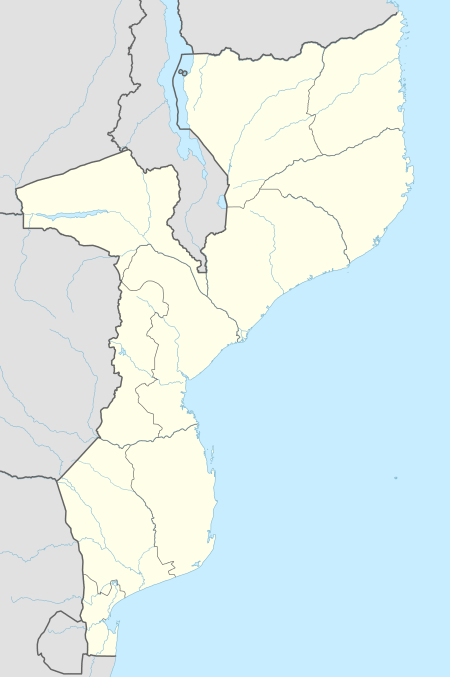Operation Eland
| Operation Eland | |||||||
|---|---|---|---|---|---|---|---|
| Part of the Rhodesian Bush War | |||||||
| |||||||
| Belligerents | |||||||
|
| |||||||
| Commanders and leaders | |||||||
|
|
| ||||||
| Strength | |||||||
| Rhodesia: 84[2] |
ZANLA: 5,000[2] Unknown number of Mozambican soldiers | ||||||
| Casualties and losses | |||||||
| 4 injured |
ZANLA: 1,028[2] - 2,000[3] Mozambique: 30 | ||||||
Operation Eland, also known as the Nyadzonya[lower-alpha 1] Raid, was a pre-emptive strike carried out by operatives of the Rhodesian Selous Scouts at Nyadzonya in Mozambique on 9 August 1976.[1] The Rhodesians claimed 300 ZANLA and 30 FAM (Armed Forces of Mozambique) soldiers were killed; documentation captured after the event suggested that 1,028 were killed.
Operation
On 5 August 1976, a group of 60 ZANLA guerrillas entered Rhodesia from Mozambique and attacked a military base at Ruda, near Umtali. Four days later, guerrillas killed four soldiers in a mortar attack, and another died in a follow-up operation. The local white population demanded that action be taken.[2]
Operation Eland was hatched, and involved a cross-border raid by 84 Selous Scouts under Captain Rob Warraker against a concentration of guerrillas located at a training camp on the Nyadzonya River, 40 kilometres (25 mi) away in Mozambique. The attacking column consisted of four Ferret armoured cars and seven armoured Unimogs, two of which were armed with 20mm Hispano cannons scavenged from obsolete aircraft. The vehicles were disguised to make them look like they belonged to FRELIMO, while the men wore uniforms to match.[2] Amongst the soldiers was a turned former ZANLA commander by the name of Morrison Nyathi, who led the attackers to the camp.[4]
The attacking party was able to bluff its way past the gate guards and drive into the very heart of the camp. Nyathi blew a whistle, which was the emergency signal for the guerrillas to muster on the parade ground;[4] the vehicles were swarmed by thousands of guerrillas before the Rhodesians opened fire at point-blank range. Carnage ensued, with hundreds being shot, or drowning in the nearby river in their attempt to escape. ZANLA documents captured after the raid indicated that 1028 of their number had been killed, a figure considerably higher than the 300 initially claimed by the Rhodesians.
The bridge over the Pungwe River was a key strategic point that the assault team had to fight their way through on their return journey to Rhodesia. The bridge was successfully assaulted, and then charges laid under enemy fire to destroy it, and thereby to cover the escape.
Aftermath
The South African government withdrew military support that was being provided covertly through Operation Polo. ZANLA claimed that the base was a refugee camp, and that the assault was the worst atrocity of the war.[2] Captured ZANLA documents revealed that many of those killed in the raid were either trained guerrillas or were undergoing guerrilla instruction.[5]
See also
References
- 1 2 3 Smith, Ian (1997). The Great Betrayal. London: Blake Publishing Ltd. pp. 195–196. ISBN 1-85782-176-9.
- 1 2 3 4 5 6 7 8 9 10 Moorcraft, Paul L.; McLaughlin, Peter (April 2008) [1982]. The Rhodesian War: A Military History. Barnsley: Pen and Sword Books. ISBN 978-1-84415-694-8.
- 1 2 3 Peter J.H. Petter-Bowyer. Winds of Destruction: The Autobiography of a Rhodesian Combat Pilot (2005 ed.). 30°. pp. 278–279. ISBN 0-9584890-3-3.
- 1 2 Manyame-Tazarurwa, p. 25.
- ↑ Stiff, Peter; Reid-Daly, Lt. Col. Ron (1982). Selous Scouts: Top Secret War. Alberton (South Africa): Galago. pp. 397–406.
Notes
- ↑ Also spelt "Nyadzonia" in some texts
